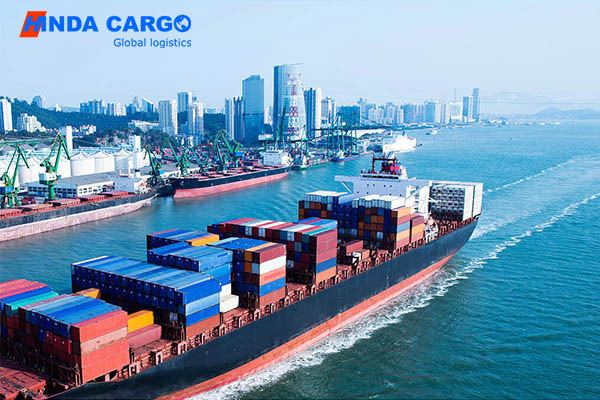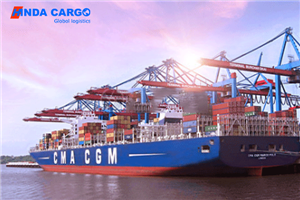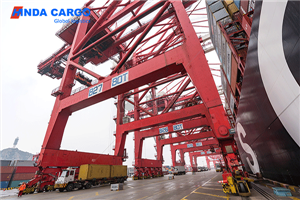Quels sont les 11 termes du commerce international ?
Incoterms play a vital role in international trade. They define the responsibilities and cost sharing between buyers and sellers during transportation, helping to reduce risks and disputes in the trade process.
The International Chamber of Commerce (ICC) has developed and updated these terms to adapt to the changing global trade environment. The latest version of the International Trade Terms (Incoterms 2020) includes 11 main terms.
This article will introduce these 11 international trade terms and their specific content and application scenarios in detail.

11 International Trade Terms:
1. EXW (Ex Works)
2. FCA (Free Carrier)
3. CPT (Carriage Paid To)
4. CIP (Carriage and Insurance Paid To)
5. DPU (Delivered at Place Unloaded)
6. DAP (Delivered at Place)
7. DDP (Delivered Duty Paid)
8. FAS (Free Alongside Ship)
9. FOB (Free on Board)
10. CFR (Cost and Freight)
11. CIF (Cost, Insurance and Freight)

1. EXW (Ex Works)
What does EXW mean?
● Definition: Under EXW terms, the seller delivers the goods to the buyer at its location (such as a factory or warehouse) and the delivery is completed. The seller is not responsible for delivering the goods to the designated location, nor does it bear the responsibility for export customs clearance.
● Application scenarios: Applicable to situations where the buyer can arrange the entire transportation process and is capable of handling export customs clearance procedures.
Advantages and disadvantages of EXW:
● Advantages: The seller has the least responsibility and is suitable for delivery in the domestic market.
● Disadvantages: The buyer must bear all risks and costs of picking up the goods from the seller, export customs clearance and transportation.
2. FCA (Free Carrier)
What does FCA mean?
● Definition: The seller delivers the goods to the carrier or other person designated by the buyer and is responsible for export customs clearance. The place of delivery can be the seller's place or other designated place.
● Application scenarios: Applicable to multiple modes of transportation, especially when the seller is responsible for export customs clearance.
Advantages and disadvantages of FCA:
● Advantages: The seller is responsible for export customs clearance, reducing the burden on the buyer.
● Disadvantages: The buyer must bear the transportation risks and costs starting from the designated delivery place.
3. CPT (Carriage Paid To)
What does CPT mean?
● Definition: The seller pays the freight to deliver the goods to the designated destination, but the risk is transferred to the buyer when the goods are handed over to the carrier.
● Application scenario: Applicable to situations where the seller needs to arrange and pay the main transportation costs, but the buyer still needs to bear the risks during transportation.
Advantages and disadvantages of CPT:
● Advantages: The seller arranges transportation and pays the freight, simplifying the buyer's operation.
● Disadvantages: The risk is transferred when the goods are handed over to the carrier, and the buyer needs to arrange insurance on his own.
4. CIP (Carriage and Insurance Paid To)
What does CIP mean?
● Definition: The seller pays the freight and insurance to deliver the goods to the designated destination, and the risk is transferred to the buyer when the goods are handed over to the carrier. The seller needs to provide the buyer with minimum insurance.
● Application scenario: Applicable to situations where the buyer wants the seller to pay not only the freight but also the transportation insurance.
Advantages and disadvantages of CIP:
● Advantages: The seller pays the freight and insurance, reducing the buyer's risk.
● Disadvantages: Limited insurance coverage, buyers need to add insurance as needed.

5. DPU (Delivered at Place Unloaded)
What does DPU mean?
● Definition: The seller bears all costs and responsibilities for transporting the goods to the designated destination and completing unloading. The risk is transferred to the buyer after the goods are unloaded.
● Application scenario: Applicable to situations where the seller is willing to bear the responsibility for transportation and unloading.
Advantages and disadvantages of DPU:
● Advantages: The seller is responsible for transportation and unloading, and the buyer is only responsible for the operation after unloading.
● Disadvantages: The seller bears greater responsibility and risk.
6. DAP (Delivered at Place)
What does DAP mean?
● Definition: The seller bears all costs and responsibilities for transporting the goods to the designated destination, and the risk is transferred to the buyer when the goods arrive at the designated place but are not unloaded.
● Application scenario: Applicable to situations where the seller is willing to bear the responsibility for transportation but not for unloading.
Advantages and disadvantages of DAP:
● Advantages: The seller is responsible for transportation, and the buyer is only responsible for unloading.
● Disadvantages: The seller still needs to bear greater transportation risks and costs.
7. DDP (Delivered Duty Paid)
What does DDP mean?
● Definition: The seller bears all responsibilities and costs of transporting the goods to the designated destination and paying all duties, taxes and other import fees. The risk is transferred to the buyer after the goods arrive at the designated place.
● Application scenario: Applicable to situations where the seller is willing to bear all transportation and import responsibilities and costs.
Advantages and disadvantages of DDP:
● Advantages: The seller bears all responsibilities and the buyer's operation is simple.
● Disadvantages: The seller has the greatest responsibility and costs and needs to be familiar with the regulations of the importing country.
8. FAS (Free Alongside Ship)
What does FAS mean?
● Definition: The seller delivers the goods to the shipside of the designated port of shipment and is responsible for export customs clearance. The risk is transferred to the buyer after the goods are delivered alongside the ship.
● Application scenario: Applicable to sea or inland waterway transportation, the buyer is responsible for transportation from the port of shipment to the destination.
Advantages and disadvantages of FAS:
● Advantages: The seller is responsible for export customs clearance and delivery alongside the ship, simplifying the buyer's initial operation.
● Disadvantages: The buyer bears the costs and risks of loading and subsequent transportation.
9. FOB (Free on Board)
What does FOB mean?
● Definition: The seller loads the goods onto the ship at the designated port of shipment and is responsible for export customs clearance. The risk is transferred to the buyer when the goods cross the ship's rail.
● Application scenario: Applicable to sea or inland waterway transportation, the buyer is responsible for transportation from the port of shipment to the destination.
Advantages and disadvantages of FOB:
● Advantages: The seller is responsible for export customs clearance and loading, simplifying the buyer's initial operations.
● Disadvantages: The buyer bears the costs and risks of sea and subsequent transportation.

10. CFR (Cost and Freight)
What does CFR mean?
● Definition: The seller pays the freight to transport the goods to the designated port of destination, but the risk is transferred to the buyer when the goods are loaded.
● Application scenario: Applicable to sea or inland waterway transportation, the seller pays the freight but the buyer bears the transportation risk.
Advantages and disadvantages of CFR:
● Advantages: The seller pays the freight, and the buyer is responsible for insurance and risks after loading.
● Disadvantages: The buyer needs to arrange transportation insurance on his own and bear greater risks.
11. CIF (Cost, Insurance and Freight)
What does CIF mean?
● Definition: The seller pays the freight and insurance for transporting the goods to the designated port of destination, and the risk is transferred to the buyer when the goods are loaded. The seller needs to provide the buyer with minimum insurance.
● Application scenario: Applicable to sea or inland waterway transportation, the seller pays the freight and insurance, and the buyer bears the transportation risk.
Advantages and disadvantages of CIF:
● Advantages: The seller pays the freight and insurance, reducing the buyer's risk.
● Disadvantages: Limited insurance coverage, the buyer needs to add insurance as needed.
Summary
These 11 international trade terms cover all links from the seller's delivery point to the buyer's receipt of the goods, clarify the sharing of responsibilities and costs, and help buyers and sellers reduce risks and disputes in international trade.
Each term has its specific application scenario and advantages and disadvantages. When choosing, enterprises need to make judgments based on specific trade needs and actual operational capabilities.




